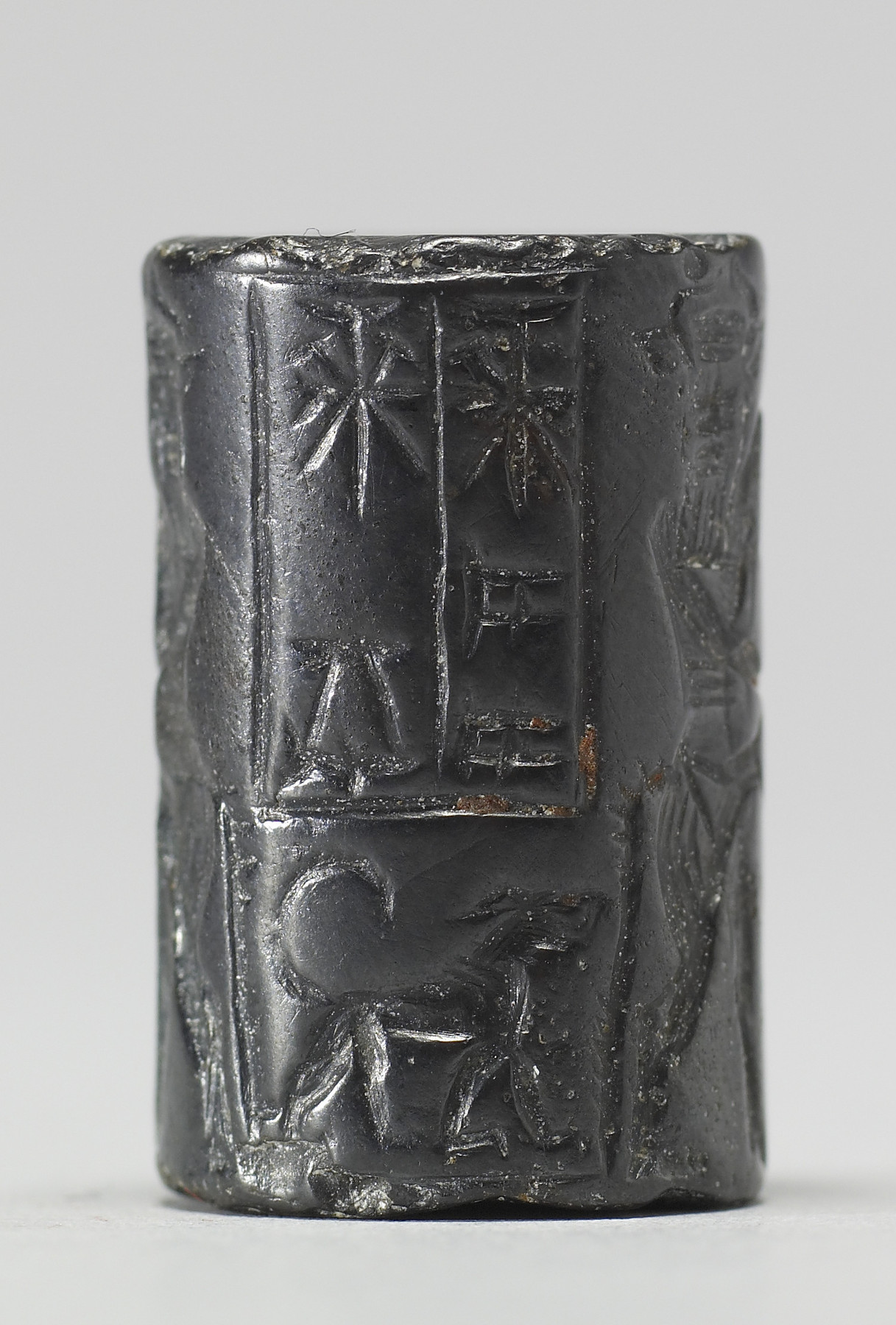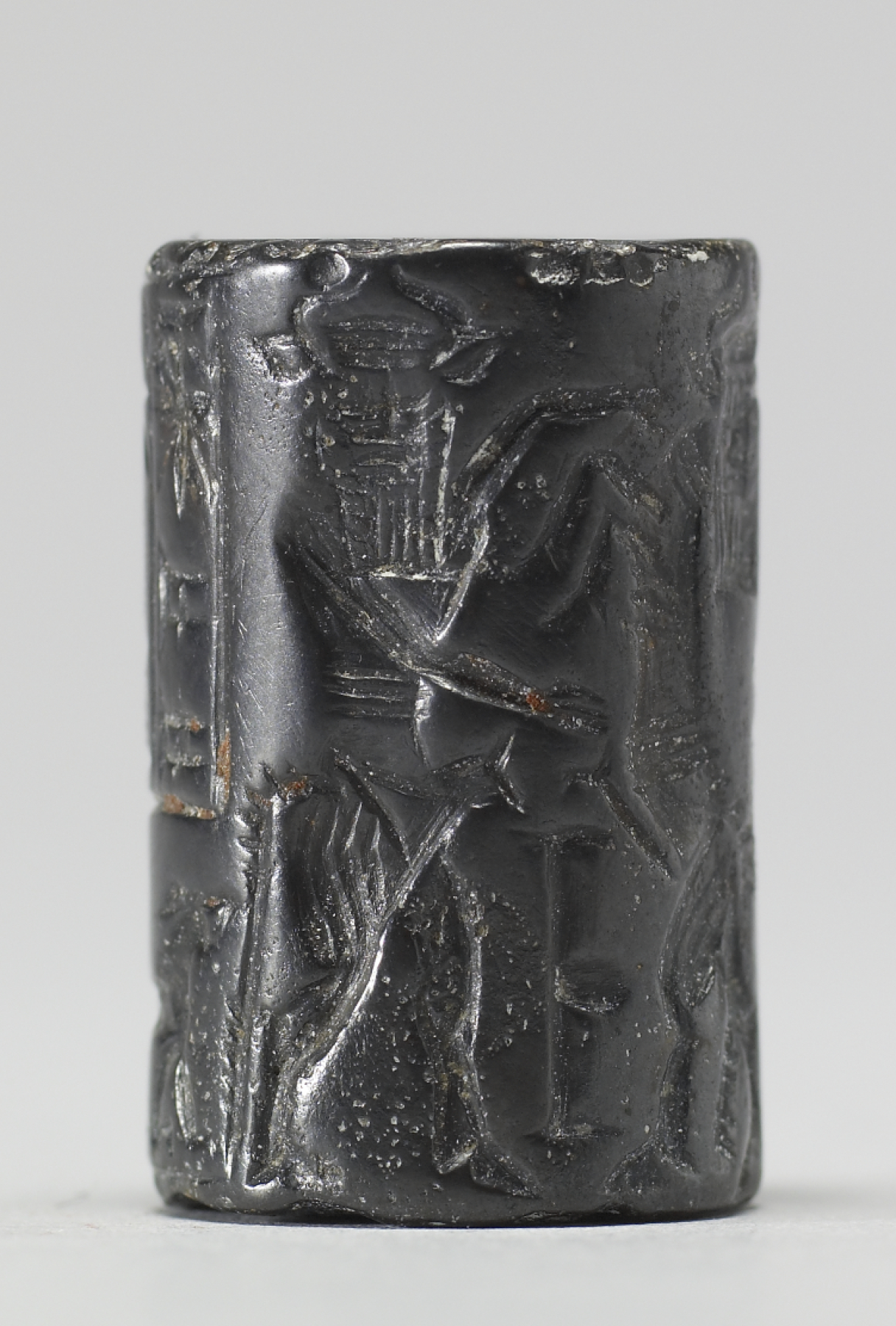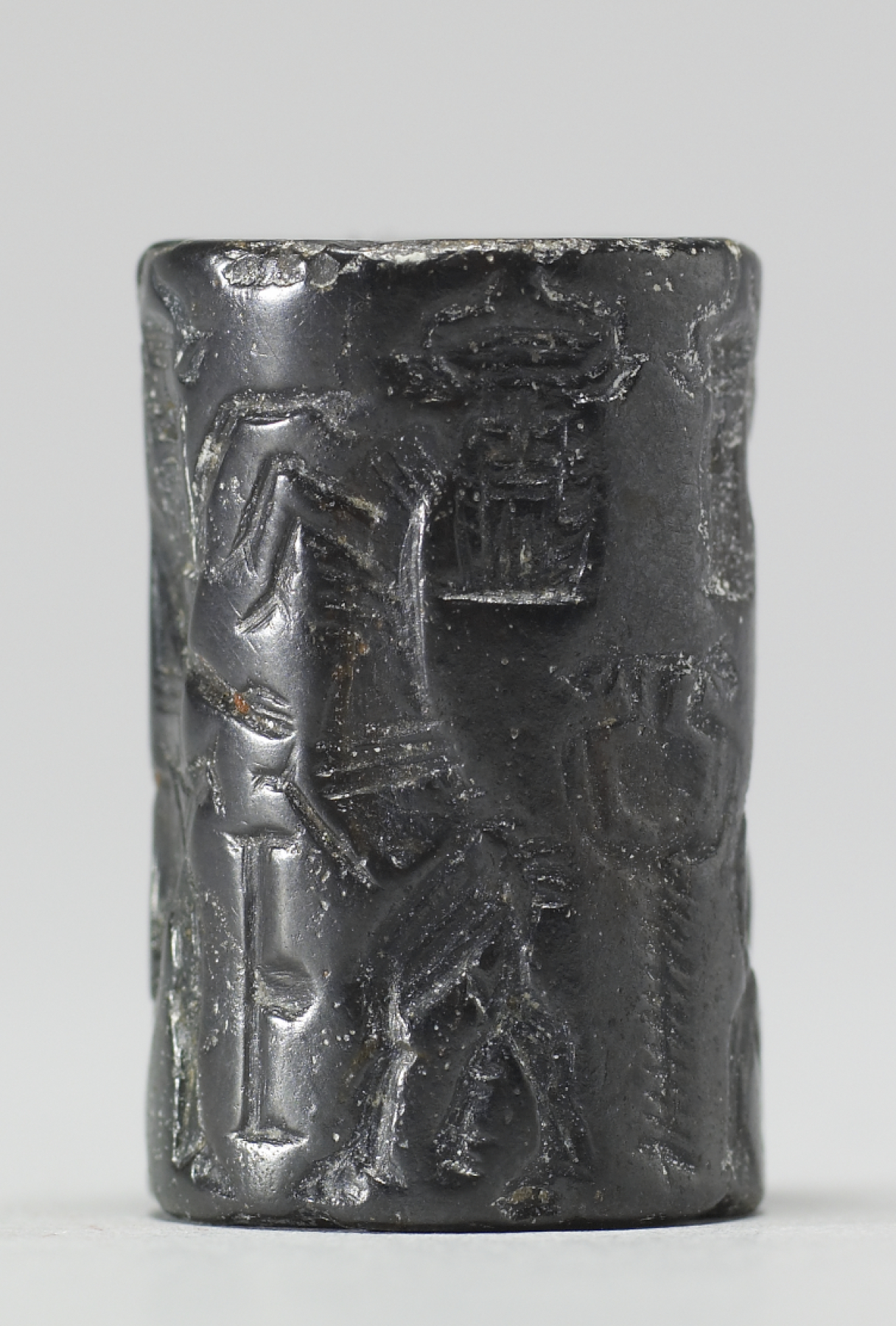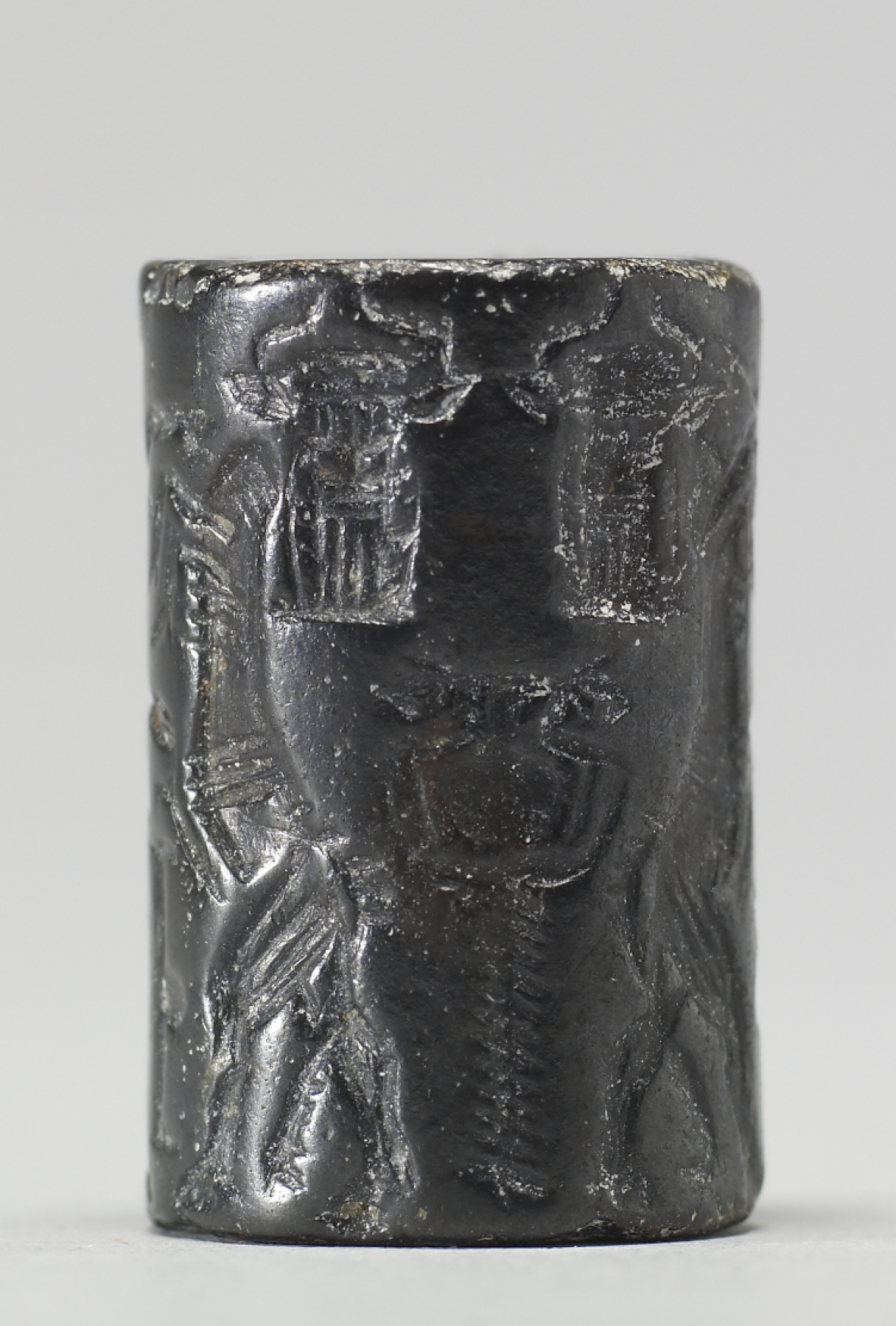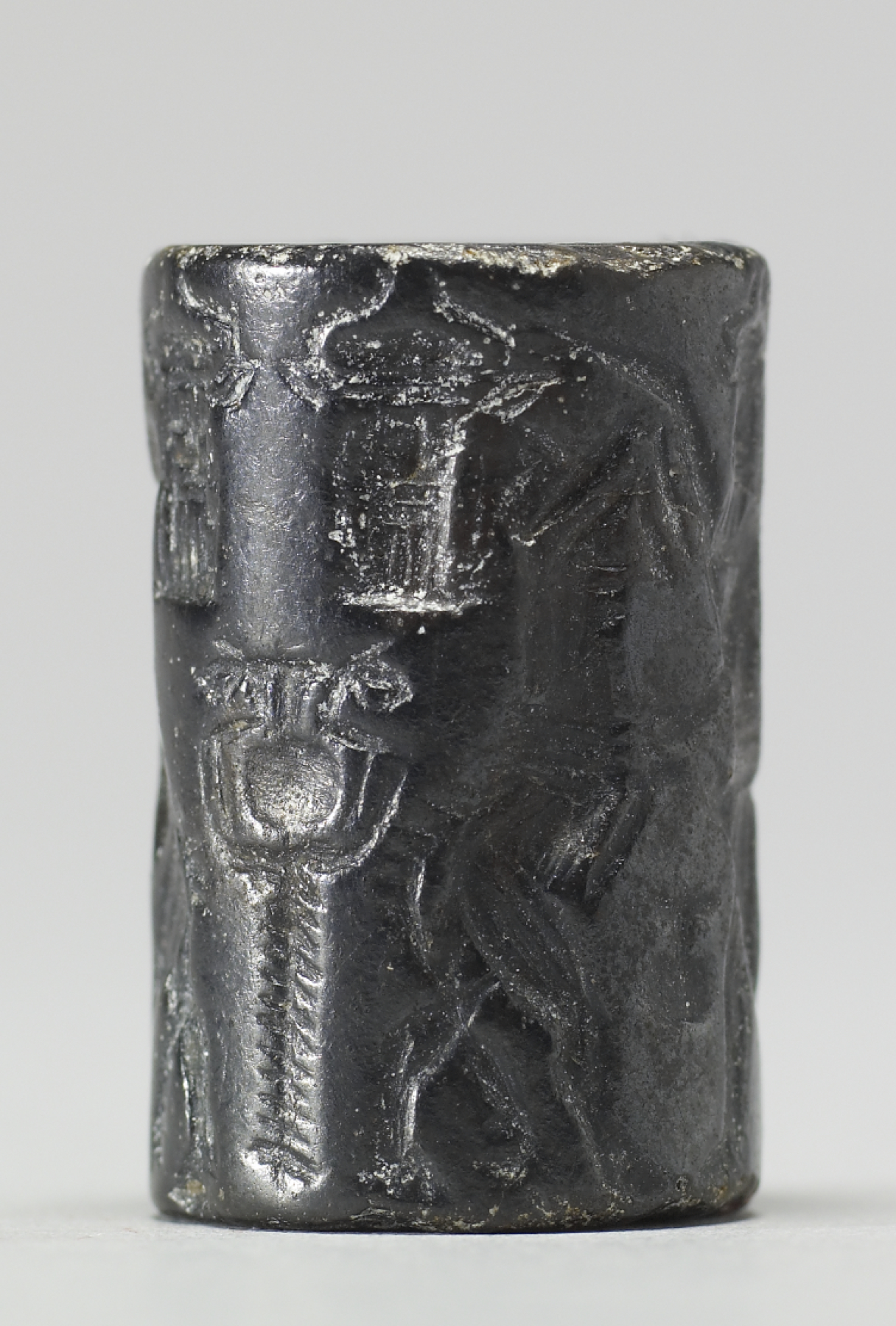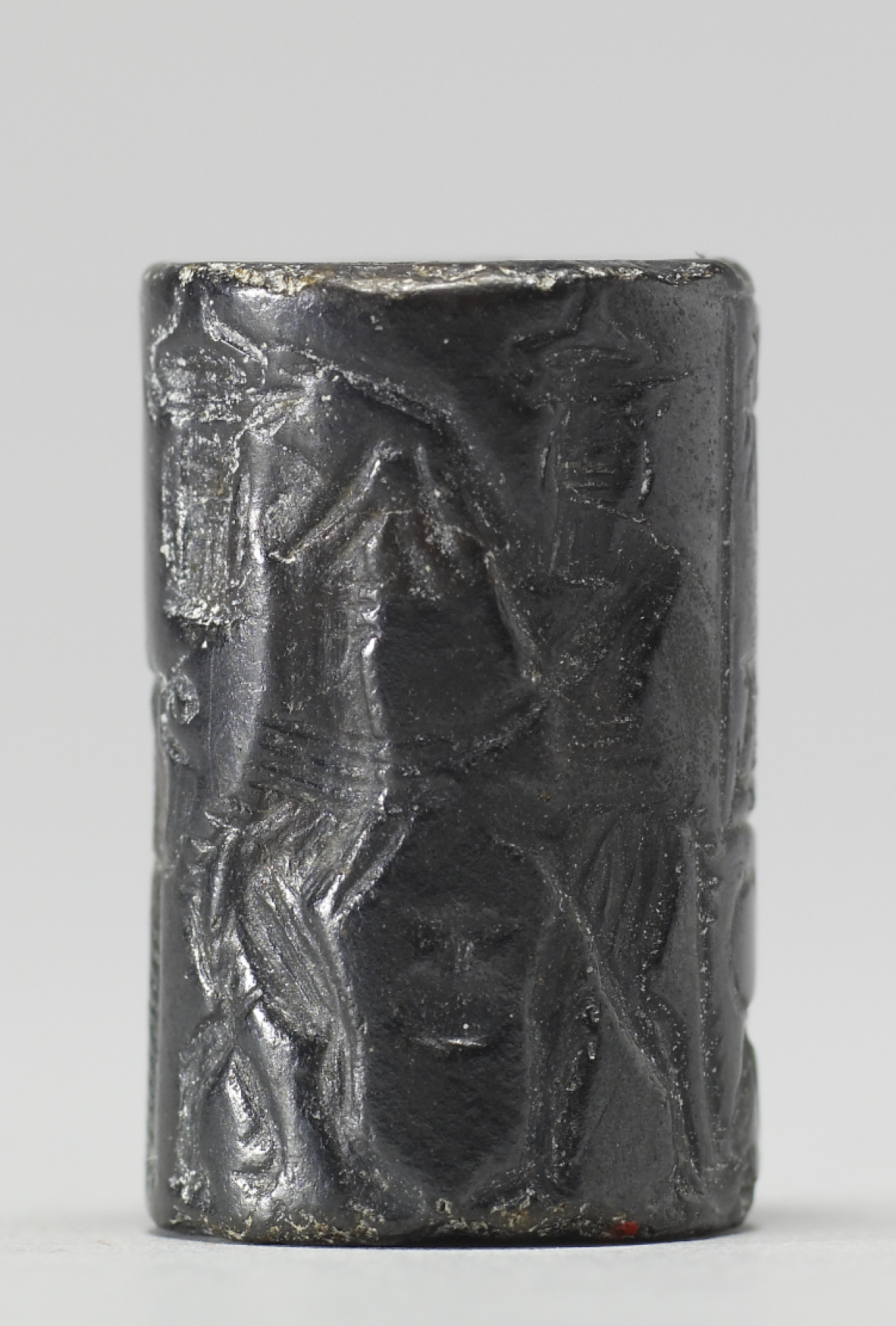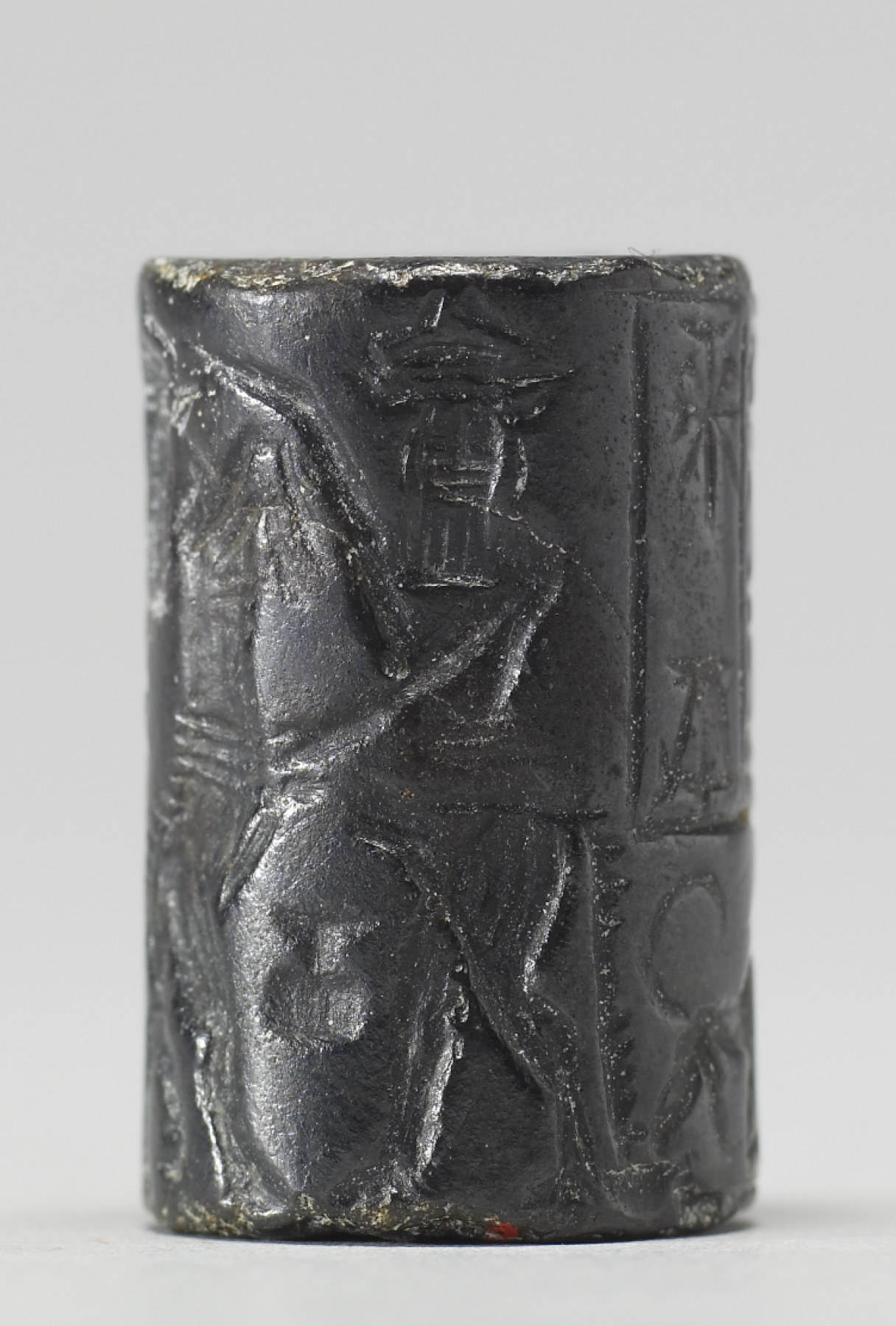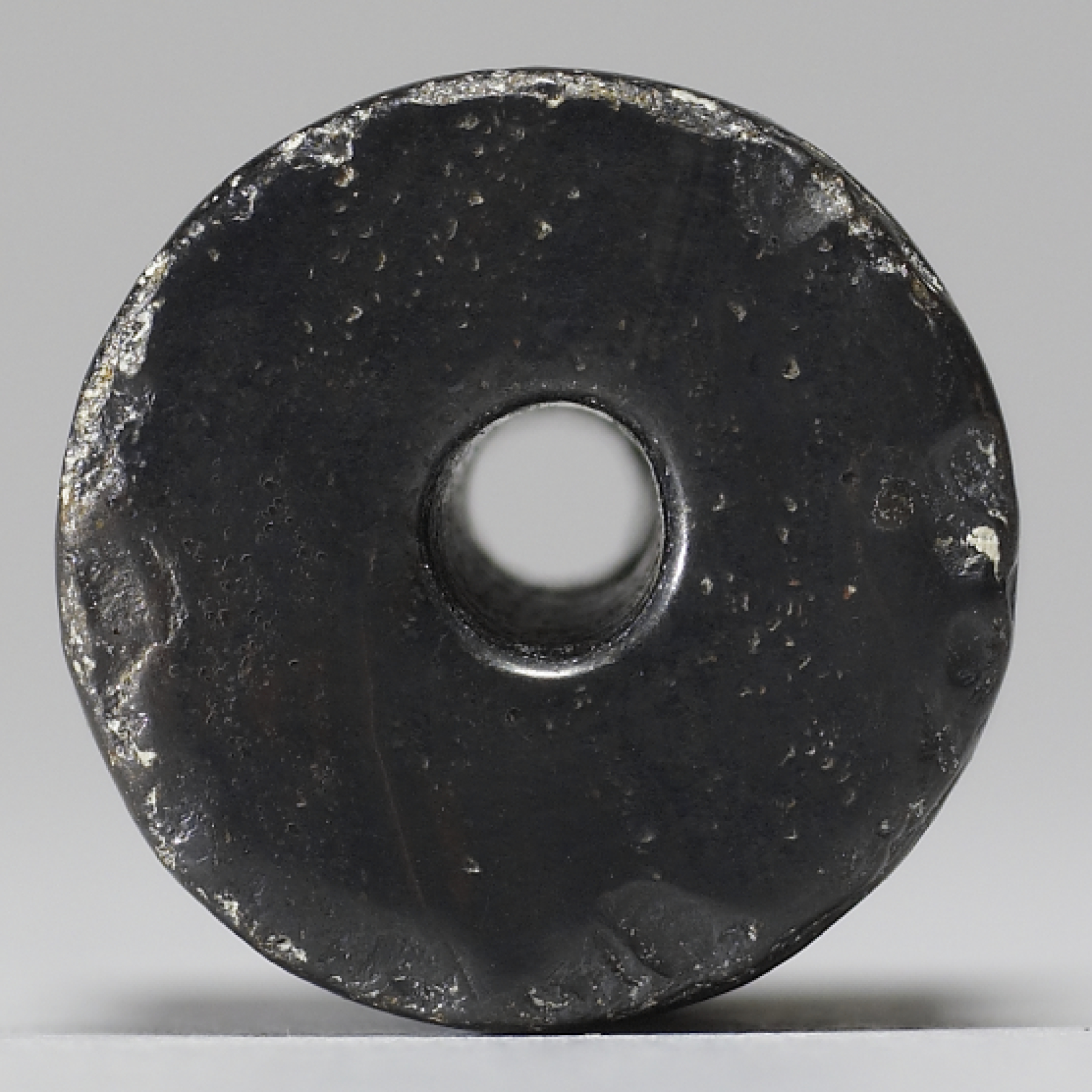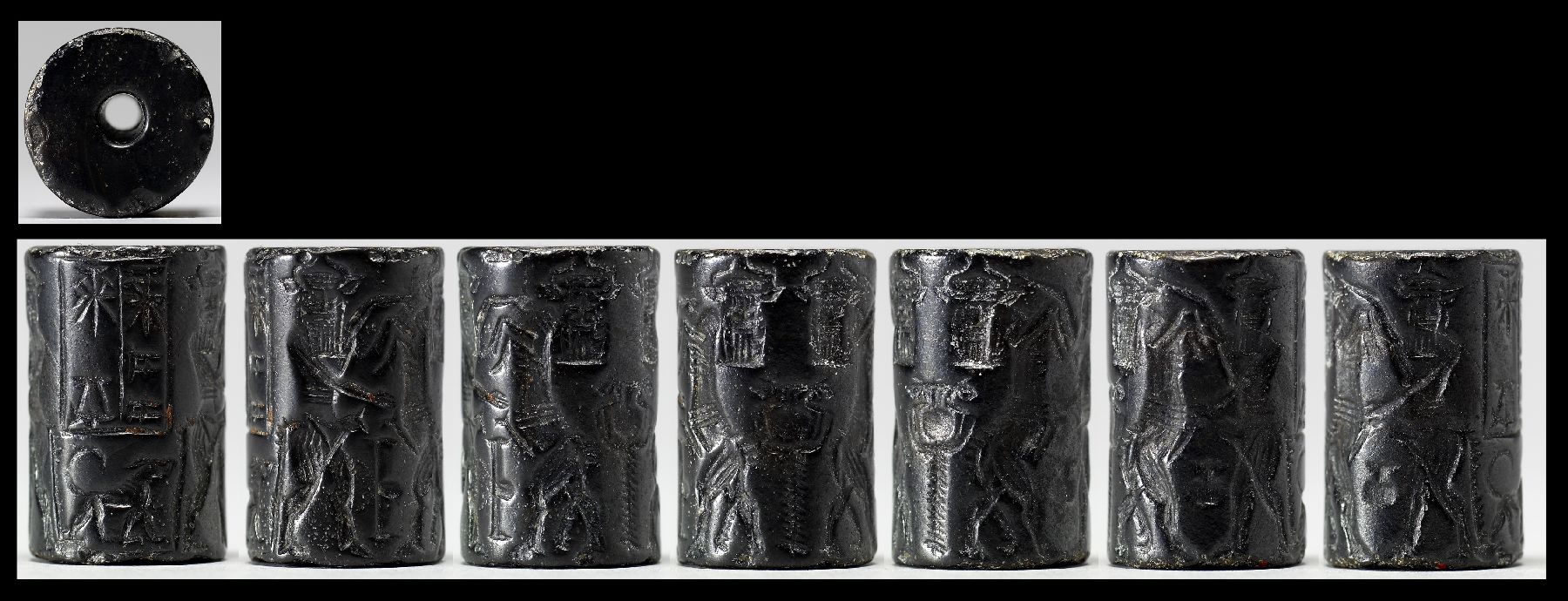Cylinder Seal with Enkidu Vanquishing the Bull of Heaven
(Ancient Near East )
At the center of the depicted scene is a handled jug on a stand. Flanking this motif on both sides is an animal contest motif with a bearded hero/bull-man in horned headdress battling a bull-man. At the edge of the scene is a cuneiform inscription in two registers at the top, and beneath it is a small four legged animal with a long tail that curls upward.
Cylinder seals are cylindrical objects carved in reverse (intaglio) in order to leave raised impressions when rolled into clay. Seals were generally used to mark ownership, and they could act as official identifiers, like a signature, for individuals and institutions. A seal’s owner rolled impressions in wet clay to secure property such as baskets, letters, jars, and even rooms and buildings. This clay sealing prevented tampering because it had to be broken in order to access a safeguarded item. Cylinder seals were often made of durable material, usually stone, and most were drilled lengthwise so they could be strung and worn. A seal’s material and the images inscribed on the seal itself could be protective. The artistry and design might be appreciated and considered decorative as well. Cylinder seals were produced in the Near East beginning in the fourth millennium BCE and date to every period through the end of the first millennium BCE.
Inscription
Provenance
Provenance (from the French provenir, 'to come from/forth') is the chronology of the ownership, custody, or location of a historical object.
Henry Walters, Baltimore, [date and mode of acquisition unknown]; Sadie Jones (Mrs. Henry Walters), New York, 1931, by inheritance; Joseph Brummer, Paris and New York, 1941, by purchase; Walters Art Museum, 1941, by purchase.
Conservation
| Date | Description | Narrative |
|---|---|---|
| 6/4/1968 | Treatment | other |
Geographies
Mesopotamia (Place of Origin)
Measurements
H: 7/8 x Diam: 9/16 in. (2.3 x 1.4 cm)
Credit Line
Museum purchase [formerly part of the Walters Collection], 1941
Location in Museum
Not on view
Accession Number
In libraries, galleries, museums, and archives, an accession number is a unique identifier assigned to each object in the collection.
In libraries, galleries, museums, and archives, an accession number is a unique identifier assigned to each object in the collection.
42.786

